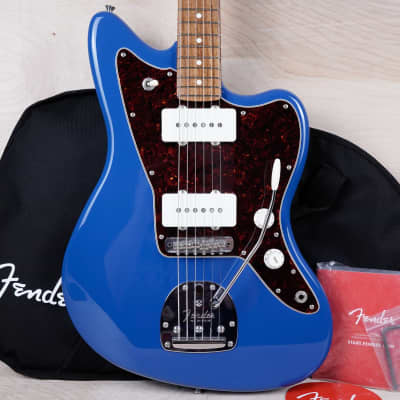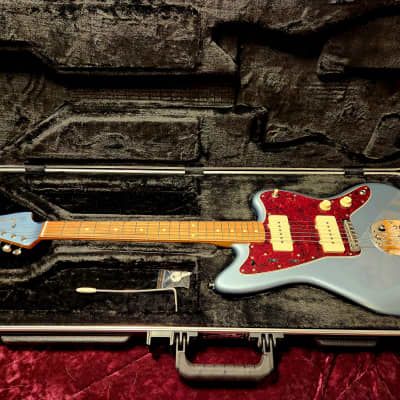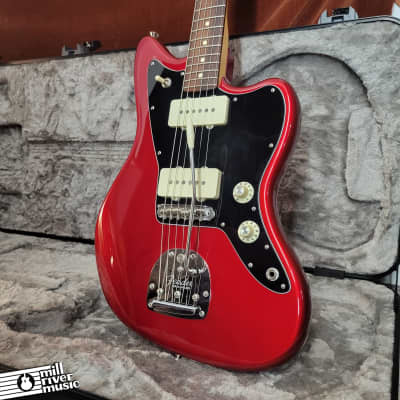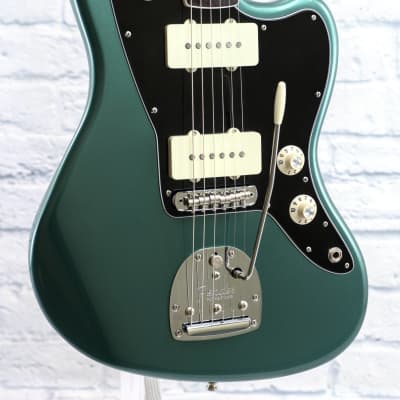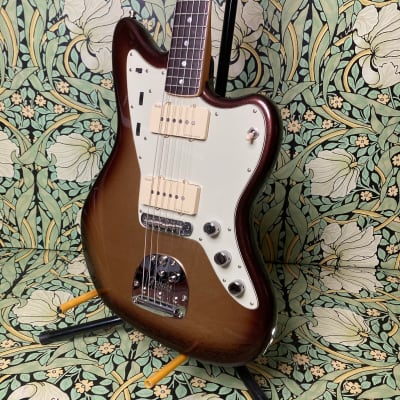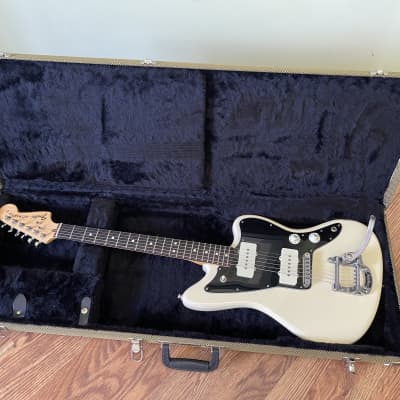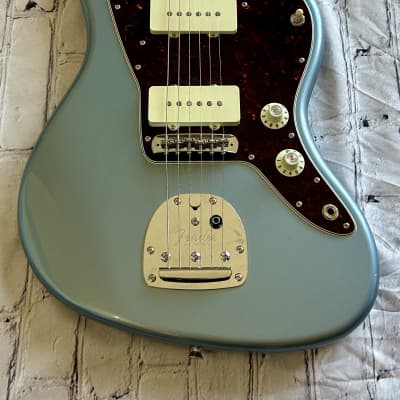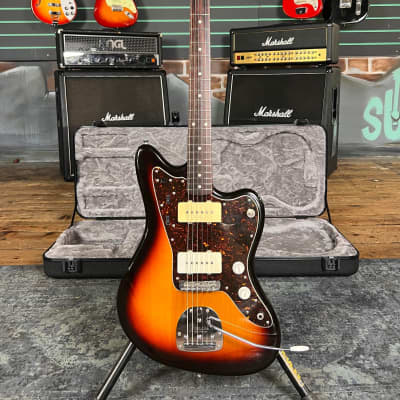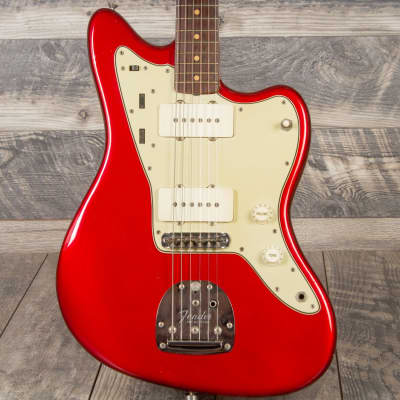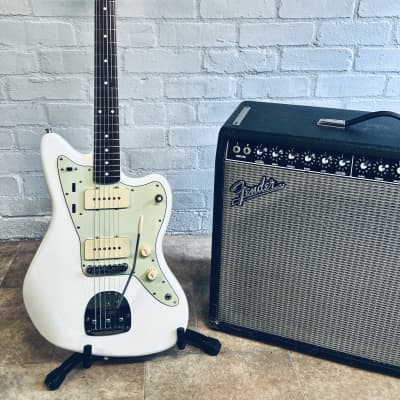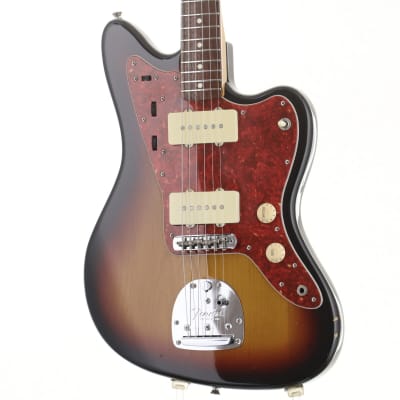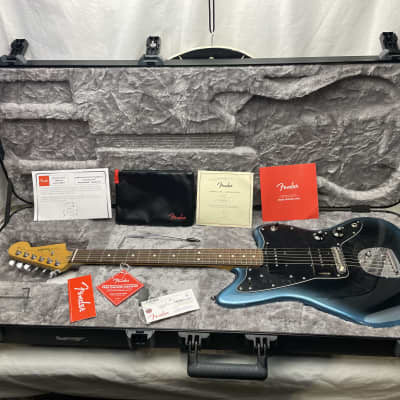There’s no denying it: Offset guitar designs have found their way from the fringes to the main stage. With an ever-expanding anthology of designs within this category, the Fender Jazzmaster is undoubtedly the grand-daddy of them all. First released in 1958, suspended from production in the early 1980s, and then relaunched in a variety of forms shortly thereafter, there are now almost endless options for adding some Jazzmaster swagger to your rig.
Whether you’re on the prowl for your first Jazzmaster or looking to add another to your anthology, this guide will walk you through various categories and price points for Fender’s iconic offset.
What to Consider When Buying a Jazzmaster
Before delving into instrument options, however, there are several design appointments of Jazzmasters that generally differentiate between models down through the decades. Having a handle on these will make navigating your Jazzmaster journey a little easier.
Electronics
One of the proprietary design features of vintage (and some modern) Jazzmasters is their rhythm circuit switching system. You’ll know your electric guitar has one of these if it has a switch and pair of inset tone and volume controls directly above the pickups.
When engaged, this feature takes the usual tone and volume pots out of the equation and offers a warmer “jazzy” sound, with its own dedicated tone and volume sounds. While these are both loved and loathed by players, they can also serve as a foundation for brilliant onboard circuitry mods to give your Jazzmaster a truly unique sound.
Bridge and Tremolo
The other key innovation on Jazzmasters has to be their single-spring-based tremolo system that is inset in the body behind the bridge. While the design of these is quite simple and stable across models, you will generally find higher-quality materials the more you inch up the price range.
Along with this, bridges in Jazzmasters come in surprising varieties, from true vintage-style barrel saddles to Mustang-inspired designs to Tune-O-Matic bridges. With that tremolo system rocking and rolling, bridge choice is huge for tuning stability.
In some used specimens, you may also find aftermarket hardware mods to either or both of these features. For example, if you find an instrument with a Mastery trem and/or bridge system, scoop it up as they are hands-down the best aftermarket asset for any offset.


1959 Fender Jazzmaster
Pickups
If you’re new to Jazzmasters, this one needs some demystifying. Jazzmaster pickups might look like soapbar-type P-90s but they’re in fact single-coils.
While a Stratocaster pickup has taller magnets and wire wrapped around this higher construction, a Jazzmaster pickup essentially squashes this design with shorter pole magnets and wire wrapped around the larger landscape. In some more recent designs, you’ll also find a greater variety of pickup options, including humbuckers or foil-style pickups.
Tonewoods
If a tree falls in the forest, does it make a sound? Well, yes, but the tone of the sound all depends on the type of tree. The same is true of guitar designs. While more economical Jazzmasters are constructed of woods that are less-known for their tonal quality (such as spruce), as you work your way up the hierarchy you'll find tonewoods that impart more of their character to your sound, such as ash or alder.
Beginner Jazzmasters from Squier
Affordable points of entry into the world of offsets.
One of the biggest advantages to the Jazzmaster market is that you don’t have to dole out a lot of dough to get a classic guitar or one with some custom character. The Squier range includes a number of economical buys that closely mimic the design features of some of Fender's most beloved vintage-era Jazzmasters. Playing either the Vintage Modified or Classic Vibe will feel like strumming a time machine, giving players the experience and feel of an instrument with the appointments that made the original stand out decades ago.
If, however, your appeal to offsets is less for their classic flare and more for their alternative appeal, the J Mascis signature gives a punk rock makeover to the design, with notable upgrades including an Adjusto-Matic bridge. Fans of that bridge style in fear of the wobbly tremolo will also find the Squier Deluxe Jazzmaster ST to be a great hardtail pick.
Entry-Level Fender Jazzmasters
Balance quality and affordability with these Mexican- and American-built instruments.
This category is marked by design variety that showcases the true versatility of the Jazzmaster. For example, for years the Classic Series ‘60s Jazzmaster has been the go-to choice for enthusiasts striving for an instrument based on vintage specs. Both the American Performer Jazzmaster and Standard Jazzmaster HH swap classic curb appeal for aggressive edge with a set of humbuckers. Whether vintage or modern inspired, these instruments attest to the strong heritage of exceptional builds out of Fender’s Ensenada facility.
Moving stateside, Fender’s newly minted Player series includes a Jazzmaster that, perhaps fitting of its place of birth, draws on design features of the Stratocaster. Most notably, the Player Jazzmaster does away with the traditional Jazzmaster tremolo in favor of a through-body tremolo assembly. This is an ideal pick for those unaccustomed to, or uncomfortable with, the bouncing chrome tremolo designs of most Jazzmasters.
Mid-Tier American-Made Jazzmasters
Elevated craftsmanship, electronic components, and hardware appointments from Fender’s flagship facility in Corona, California.
While there are a variety of offsets crafted on Fender’s home turf on the west coast, the introduction of the Jazzmaster into the American Professional series back in 2016 was a landmark. This signaled both a homecoming of Jazzmaster builds on American soil—something that had not occurred for decades—as well as the first introduction of a Jazzmaster into a flagship product line for Fender.
To make this move, however, Fender research and development had to capitalize on the Jazzmaster’s heritage while reimagining it for a contemporary audience. This involved adaptations of form and function. For example, the complex switching system is gone in favor of a three-way toggle.
Along with this, Fender streamlined the electronics under the hood by including a treble-bleed circuit. Famed pickup designer Michael Frank developed the set of V-Mod Jazzmaster pickups that are remarkably silent yet retain the character of Fender’s flattened single-coils. Finally, the “Deep-C” neck contour has that instantly familiar, broken in feel right out of the box.
Vintage-Inspired Jazzmasters from All Over
These instruments channel the past with designs modeled after era- and year-specific instruments.
There's a distinct retro appeal to the Jazzmaster that's unlike and unmatched by any other guitar design. Fender knows this as well as we do, and to plug into the past, its built a lot of modern Jazzmaster models are built from from blueprints of some of the most famous vintage designs from the line's long history.
If you're familiar with Jazzmaster history, you know that the 1960s represented the model's golden age. Before CBS ponied up $13 million to purchase Fender in 1965, Jazzmasters were at their prime. Not surprisingly, then, many of the builds in this category have that early ‘60s vibe.
What you won’t find here are humbuckers, modernized circuitry, or overhauled tremolo systems. If you want all the switches, period-correct pickups, and all of the spring a whammy bar can handle, there are options across at a variety of price points from all over the world—China, Japan, Mexico, and America. With such a spectrum of options, be sure to do your homework on build materials, hardware features, and electronic components to ensure your new-classic fits your needs.
True Vintage Jazzmasters
These heirlooms are for enthusiasts-turned-aficionados, with their original vintage charm and character.
For Jazzmaster fans, the mythical beast of the pantheon has to be the true-vintage specimen. The range of options on Reverb for these classic originals changes daily, but there are some general insights that will serve as a compass for navigating the rare and used market.
The biggest thing is knowing that 1965 is generally a line in the sand for vintage Fender instruments. Generally, after CBS took up ownership of the company, quality and innovation declined for the better part of two decades. For this reason, pre-CBS (i.e., 1958-1965) Jazzmasters typically fetch higher prices.
While many listings will indicate the year of production, there are generally few tells that you find only on CBS-era instruments. For example, block inlay necks and fretboard bindings, a larger script Fender logo and bold font "Jazzmaster" insignia on the headstock, and Fender "F" tuners are among the more common items found on many post-1965 designs.
Fender Custom Shop Jazzmasters
One-of-a-kind builds of an all-time classic shape.
While the market for Custom Shop Jazzmasters is not as sprawling as it is for Strats or Teles, don’t mistake this limited scope for lack of character and quality. In many ways, Fender’s Custom Shop Jazzmasters are excellent contenders for people lurking the market for a vintage instrument who haven't been able to find what they're looking for.
In this category, you’ll find instruments with top-tier appointments and painstakingly detailed craftsmanship that accentuates both the beauty and particularity of Jazzmaster design features. On the classic side of things, you’ll find relic finishes on already-iconic 1960s colors (like Fiesta Red, Sonic Blue, and Charcoal Frost), metallic pickguards, and hardware features not found on any other Fender. On the modern side of things, you’ll find instruments built with exotic woods and true-custom pickguard designs.
All this to say, if a vintage find is financially out of reach or more finicky than you want in your rig, in the Jazzmaster market, Custom Shop builds are oddly affordable.
Editorial content by Andy Perrin
